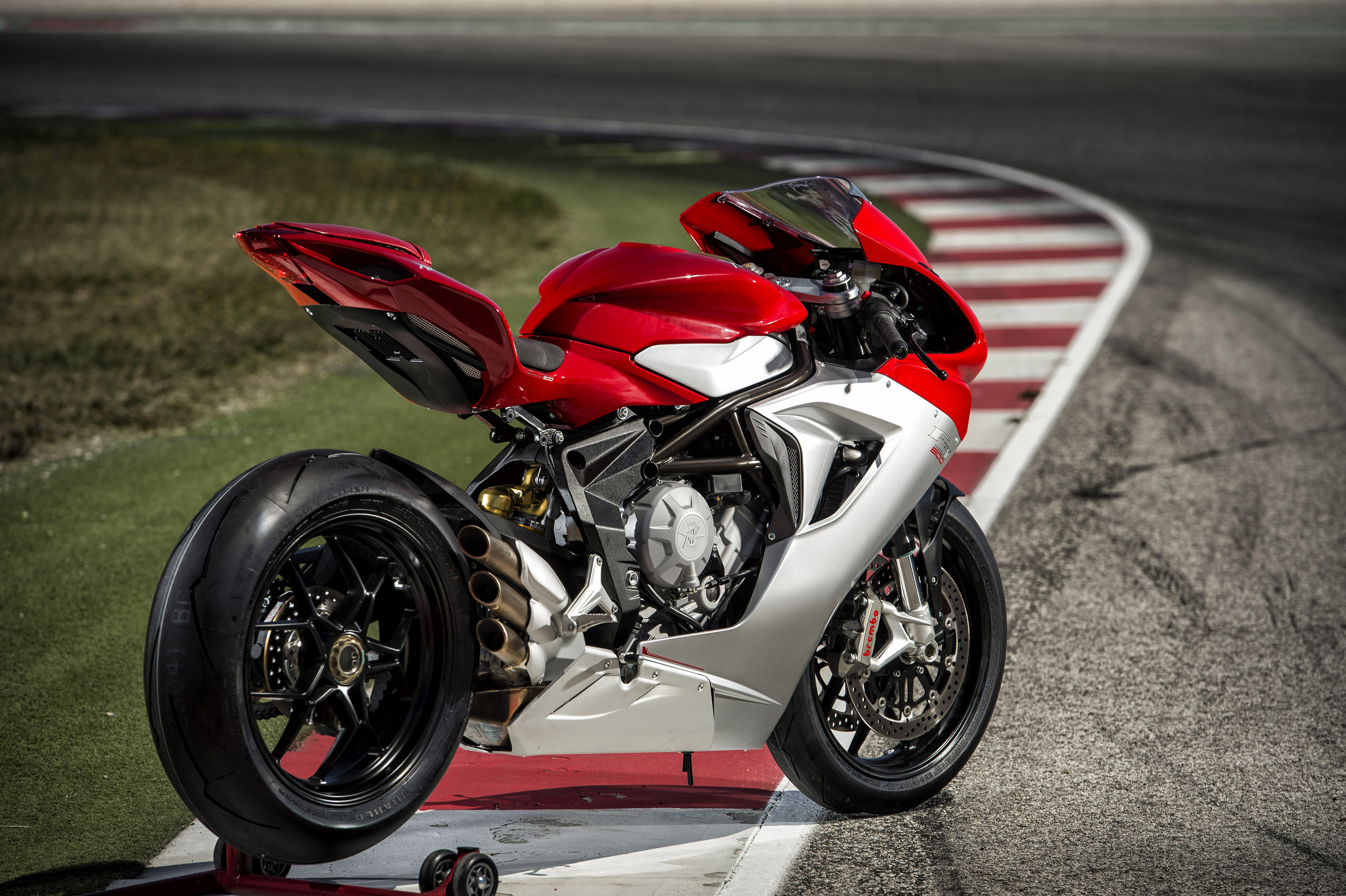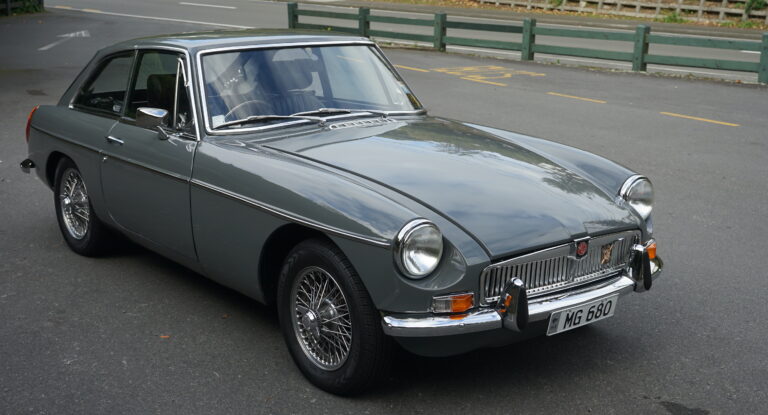
A current MV F3 model with the distinctive triple pipes

A youthful John Surtees about to sign a contract with Count Agusta
From its origins in Italy in 1945, MV Agusta is sponsoring a motorcycle race event in New Zealand for the first time. The February 1-2, 2014 meeting in Taupo has been named the ‘MV Agusta Classic’ .
The meeting will feature both classic and post-classic races plus proposed classic bike displays. The new MV Agusta demo models will be available for organized rides into the local countryside through the weekend. They will also be available for demo rides at the Triumph Classic Festival on February 7-9 at Hampton Downs. Current MV Agusta owners will have the opportunity to participate in lunchtime track parades on the long track on both the Saturday and Sunday.
MV Agusta’s name originates from Meccanica Verghera Agusta and was founded on Fenruary 12, 1945 near Milan in Cascina Costa, Italy. The company was an offshoot of the Agusta aviation company formed by Count Giovanni Agusta in 1923. The Count died in 1927, leaving the company in the hands of his wife and sons. At the end of the Second World War the motorcycle business was set up as a means to save the jobs of employees of the Agusta firm, and to fill the post-war need for cheap, efficient transportation.
The company manufactured small-displacement, Café racer style motorcycles (mostly 125–150cc) through the 1950s and 1960s. In the 1960s small motorcycle sales declined, and MV started producing larger displacement cycles in more limited quantities. A 250cc, and later a 350cc twin were produced, and a 600cc four-cylinder evolved into a 750cc.
Count Vincenzo and Domenico Agusta had a passion for mechanical workings and for motorcycle racing. Much like Enzo Ferrari, they produced and sold motorcycles almost exclusively to fund their racing efforts. They were determined to have the best Grand Prix motorcycle racing team in the world and spared no expense on their passion.
MV Agusta produced its first prototype, called “Vespa 98″, in 1945. After learning that the name had already been registered by Piaggio for its Vespa motorscooter, it then became just the “98”. In 1948, the company built a 125 cc two-stroke single and entered Franco Bertoni in the Italian Grand Prix. Bertoni won the event held in Monza and instantly put the new motorcycle manufacturer on the map.

Glacama Agostini, 15 times world champion, a name synonymous with MV Agusta
In the 1949 season, the 125cc or Ultra light weight class gained new prestige. The company developed a Dohc racer that eventually saw success in the 1952 season when Britain’s Cecil Sandford piloted the new MV 125 to a 1952 Isle of Man TT victory and won MV Agusta’s first world championship. The 1953 season saw the introduction of the 350 Four.
MV’s racing efforts now included the 500cc, 350cc and 125cc class. The three and four-cylinder race bikes were known for their excellent road handling. The fire-engine red racing machines became a hallmark of Grand Prix racing in the 1960s and early 1970s.
With the death of Count Domenico Agusta in 1971, the company lost its guiding force. The company won their last Grand Prix in 1976 and by the 1980 season, were out of GP racing. Shortly thereafter, they ceased motorcycle production. Between 1948 and 1976 MV Agusta motorcycles had won over 3000 races including 207 Grand Prix.
Cagiva purchased the MV Agusta name trademarks in 1991. In 1997 it introduced the first new MV Agusta motorcycle, a four-cylinder 750cc sports machines, the F4 range, which included a series of limited production run models. In 2004 they introduced their first 1000cc bike. MV Agusta made a limited number of F4 750cc and F4 1000cc Senna editions in memory of the late Formula One Champion Ayrton Senna, an avid Ducati and MV Agusta collector. Three hundred of each model were made in the early 2000s.
n 1999 the Cagiva group was restructured and MV Agusta become the main division, comprising Cagiva and Husqvarna. Heavily in debt, the manufacturer was bought by Malaysian car maker Proton in December 2004 for €70 million. In December 2005 Proton sold MV Agusta to GEVI SpA, for a token one euro excluding debt. By 2006 GEVI SpA, with 65% of the share capital, had refinanced MV Agusta, allowing the company to continue.
In July 2007 MV Agusta Motor S.p.A, sold the Husqvarna motorcycle brand to BMW. On July 11, 2008, Harley-Davidson announced they had signed a definitive agreement to acquire the MV Agusta Group for US$109 million (€70m), completing the acquisition on August 8, 2008 but on October 15, 2009 announced it was selling MV Agusta. On August 6, 2010 MV Agusta was sold to Claudio Castiglioni and his wholly owned holding company, MV Agusta Motor Holding, S.r.l.
Famous World Champions and Isle of Man TT winners for MV Augusta included Giacomo Agostini, Mike Hailwood, Phil Read, Carlo Ubbiali, Gary Hocking, John Hartle, Cecil Sandford, Les Graham, Bill Lomas, Tarquinio Provini, Gary Hocking and John Surtees. The company won 37 World Constructors Championships from 1955 to 1973, and from 1952 to 1974 factory riders won 38 World Titles. Between 1952 to 1972 they won 34 Isle of Man TT titles.
Today MV Agusta has invested strongly in research and development and its reflected in both the quality of the current range and their new models in the wings. While considered a boutique brand in the New Zealand market the new MV machines are much more user friendly now, and very cost competitive.


